Blog
Piano recording setup
This is the current setup I have for recording my piano. No special preamps or anything, just using a simple 2-channel focusrite saffire interface and 2 mics: an AKG 414 and a Neumann U-87 clone that I build myself.
So far, I’ve experimented with 3 different mic placements:
- Over the piano, with the mics placed close to the hammers.
- Behind the piano, with the mics placed about 4-6 inches from the soundboard.
- In front of and below the piano, with the mics placed about 6 inches on either side of the pedals (see photo).
What seems to work best so far is #3. Additionally, since the bass strings go from upper left to lower right, and the treble strings do the opposite, what I have found works really well is to mic the bass strings from the right side and pan to about 9 o’clock, and mic the treble strings from the left side, panned to about 3 o’clock. Sounds counter-intuitive, but it has resulted in the best sound with the best sense of “space” so far. The recordings from day 3 and 4 are using this setup and I like it the most so far.
I’m going to experiment soon with using my Cascade Fat Head ribbon mics as the pair, and perhaps add the U-87 as a mono overhead as well. The ribbon mics have a very warm sound which I love on drums and guitar cabs, and are particularly good in a mid-side configuration. In fact, I think I will try the M/S setup as well. Stay tuned…
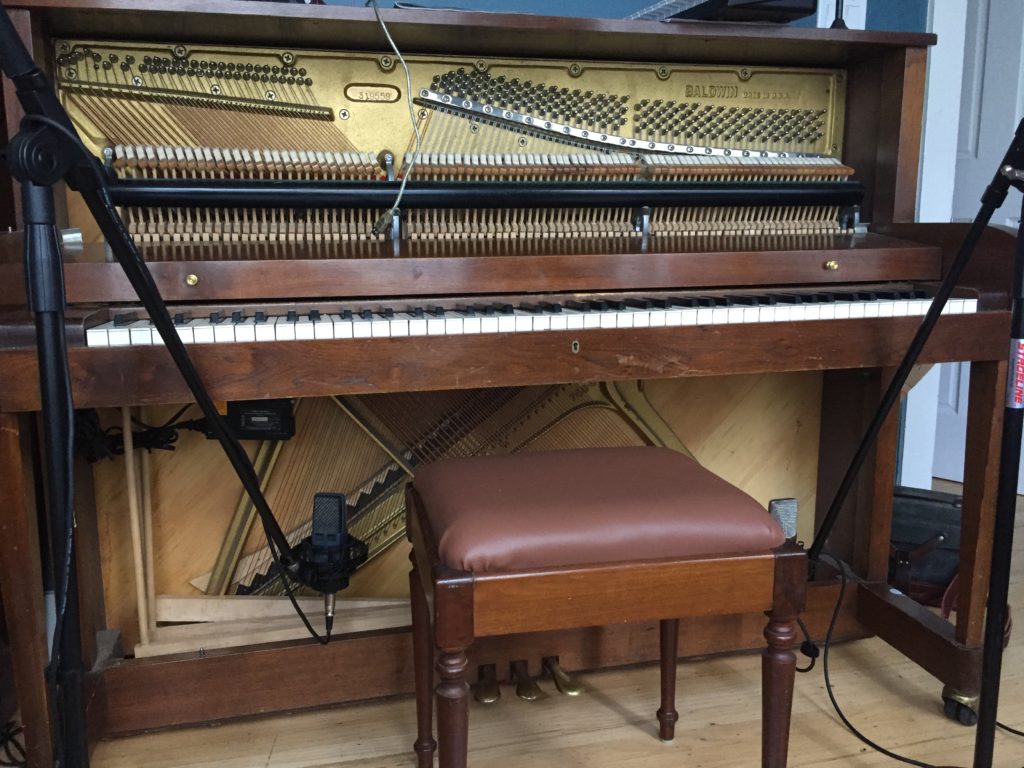
Rather than try to bring my whole recording setup from the studio in this room for the piano, I’m just using my 2 channel Saffire interface into the laptop. Simple, but sounds great.
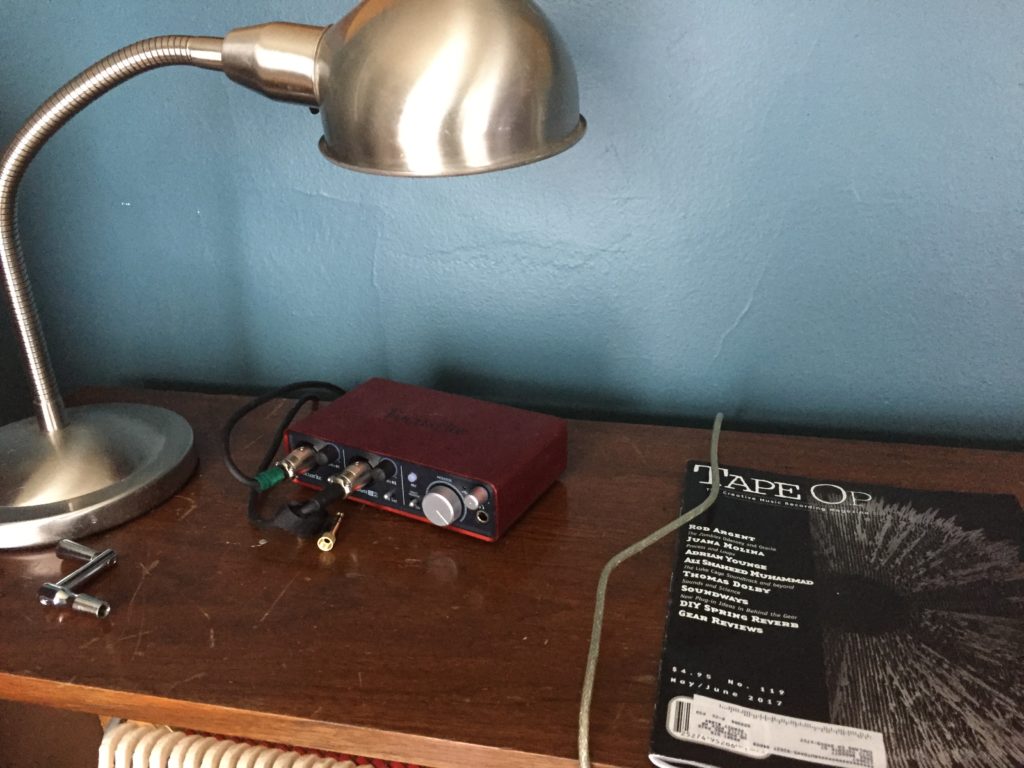
Sometimes, while I’m playing piano, Levon likes to come in and take a big smelly dump and then leaves. I’m trying not to take it personally. I guess he’s “showing his work” too…
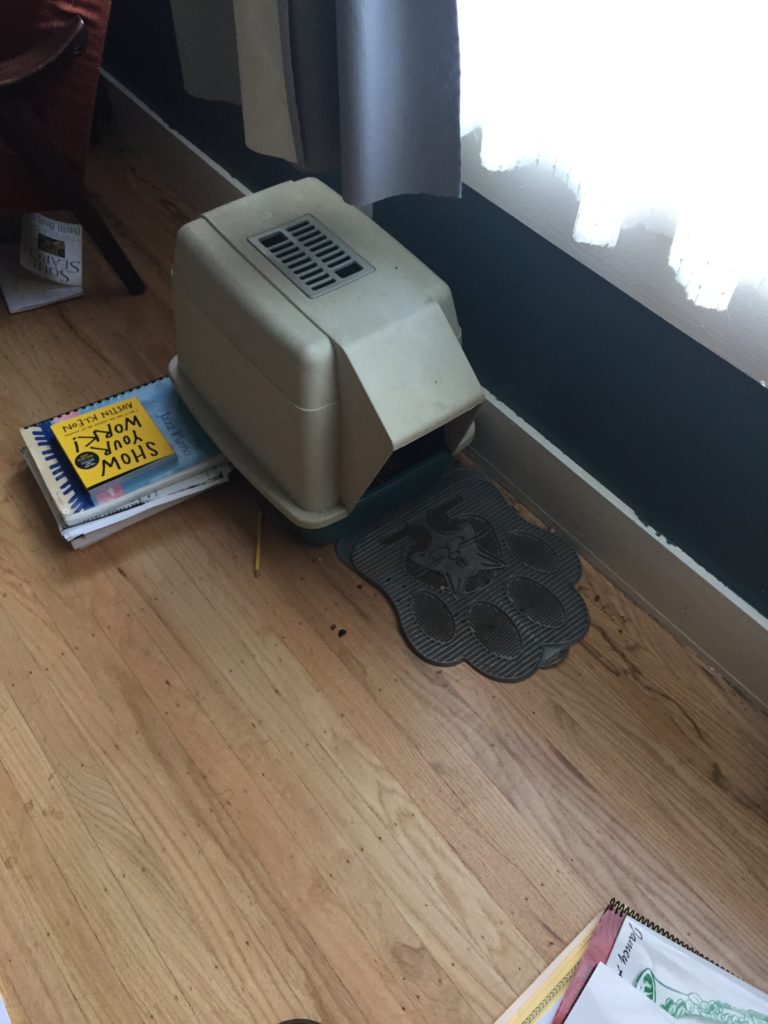
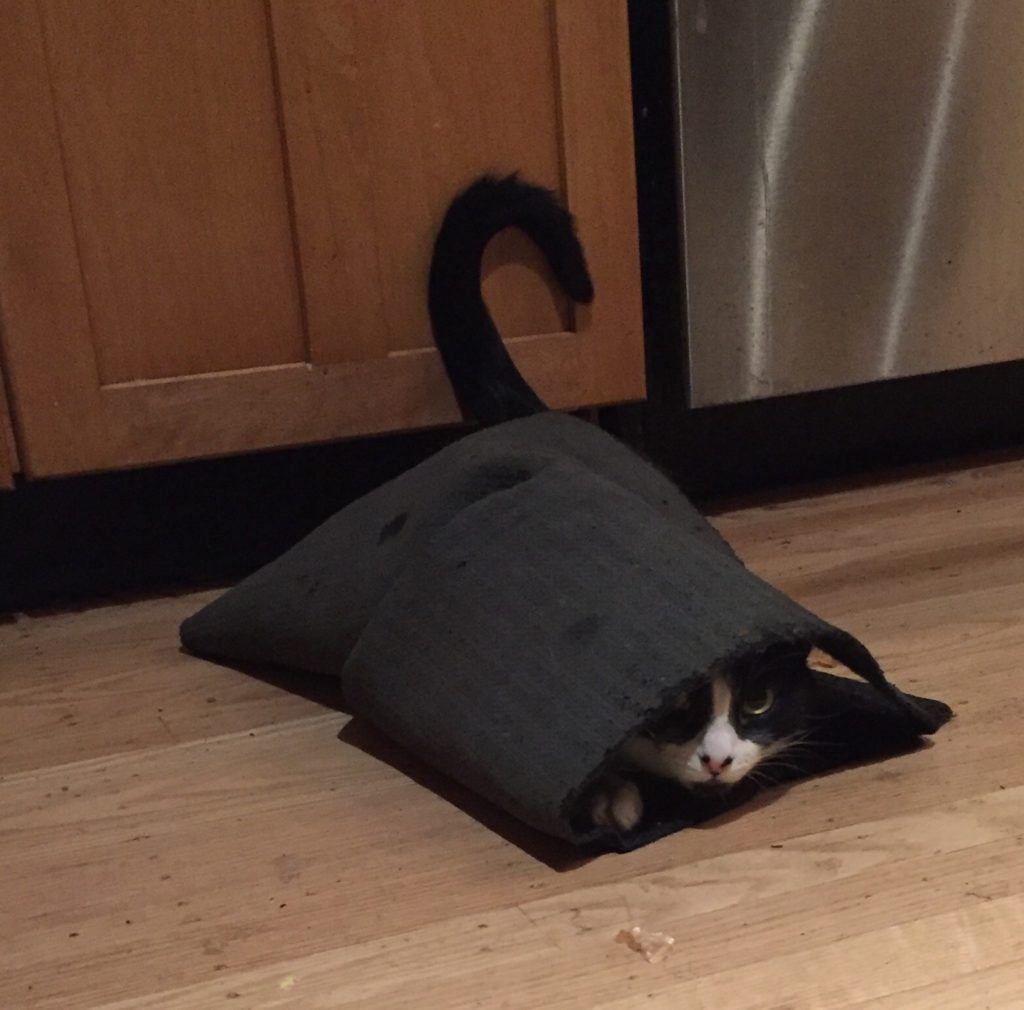
Fender Rhodes refurbishing
My Fender Rhodes has been in storage for 2 years now, but since I have space again, I decided to bring it out of retirement. I replaced the tolex with a brown faux-leather, and am in the process of repainting the lid.
Here you can see the new tolex. The harp cover is peeking out there, you can see the botched silver sparkle that I did a few years ago. His buddy the Yamaha SK15 is piggy-backing on top. I love that old analog string machine. It has an interesting smell when it warms up, and the oscillators have a tendency to drift in the coolest vintage analog way.
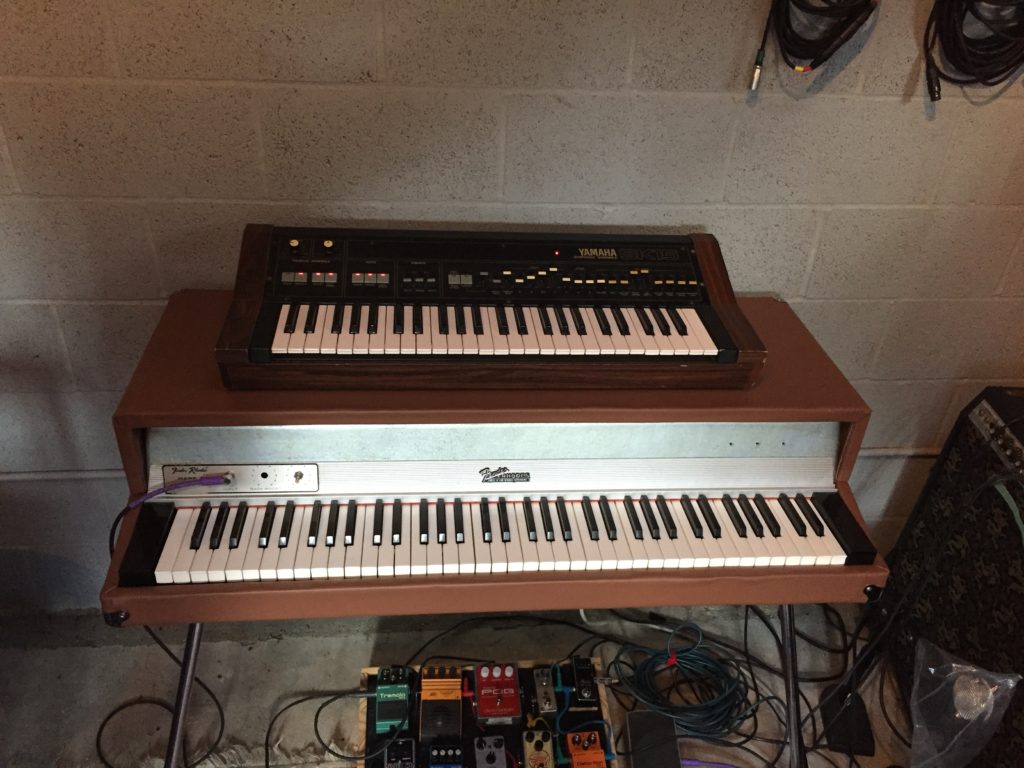
Closeup of the somewhat shitty tolex job. First time, so lessons were learned…
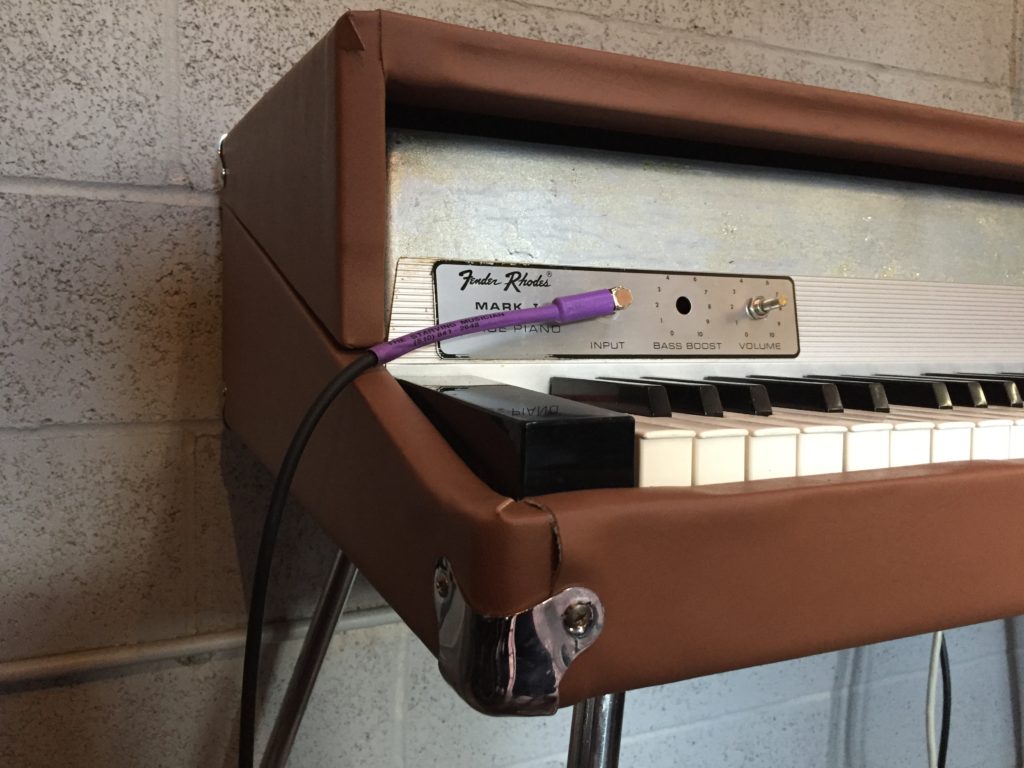
Here’s the first pass of the new paint job for the harp cover:
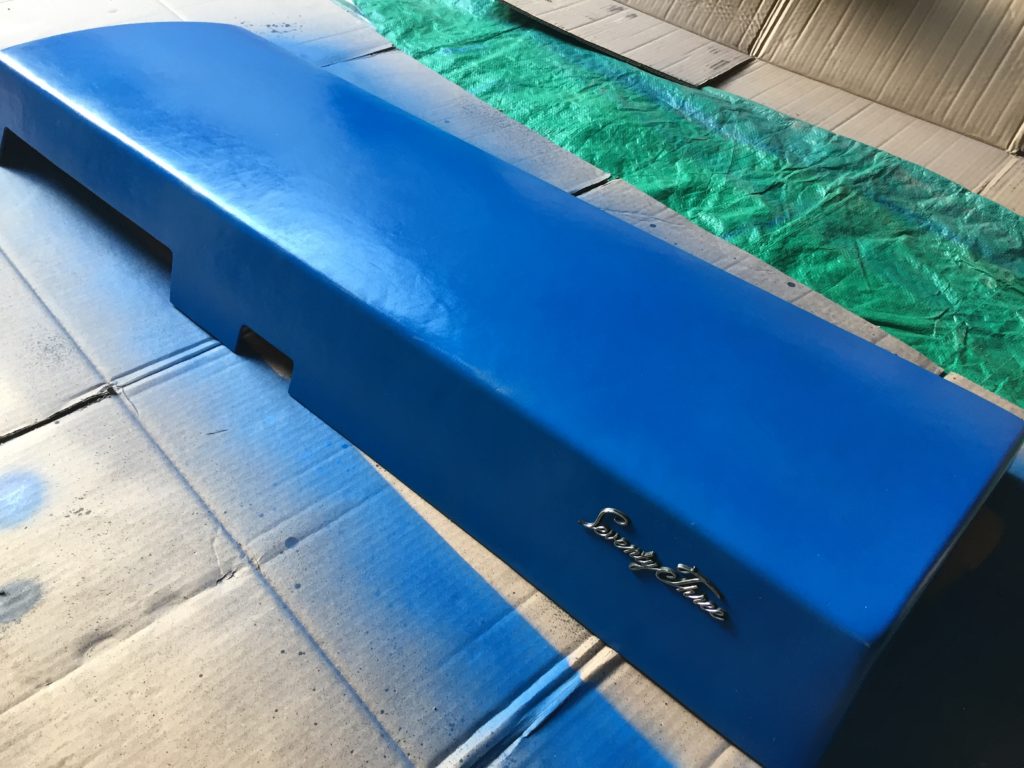
I wanted to paint it with a sparkle paint, but I’m reconsidering. I love the pelham blue color that you see on vintage Les Pauls, so was thinking of copying that. This blue is slightly darker, and non-metallic. I might go over it again with a metallic or small flake clear coat to add some interest. Then I have to clear coat it about 10 times to give it some depth.
Here it is in context, just to check the colors:

